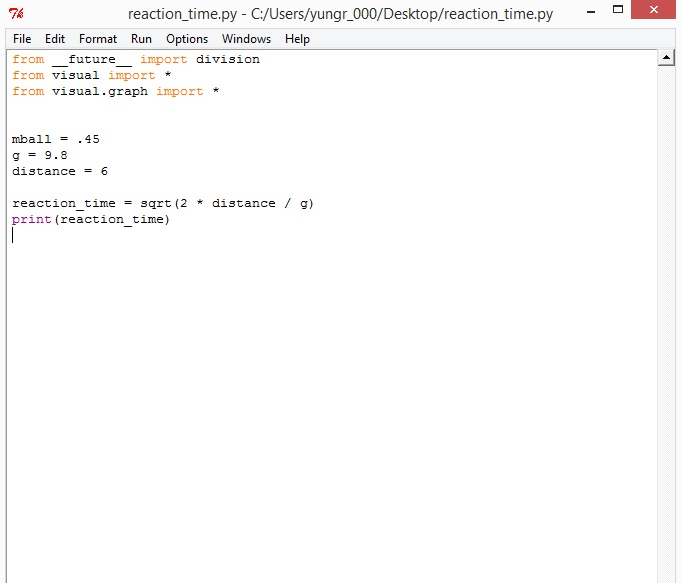Reaction Time: Difference between revisions
No edit summary |
No edit summary |
||
| Line 6: | Line 6: | ||
Your reaction time is how long it takes you to respond to an event. This can be measured one of two ways. One way to measure reaction times is given the distance that an object traveled since you reacted to it. Another application of this formula is to solve for the distance that the object caught travels based on how long it took to catch it. | Your reaction time is how long it takes you to respond to an event. This can be measured one of two ways. One way to measure reaction times is given the distance that an object traveled since you reacted to it. Another application of this formula is to solve for the distance that the object caught travels based on how long it took to catch it. | ||
https://www.youtube.com/watch?v=zu1yde207qU&feature=youtu.be | |||
===A Mathematical Model=== | ===A Mathematical Model=== | ||
Revision as of 19:20, 5 December 2015
By, Russell Dawkins
Reaction time is a physical phenomenon that can be calculated using the momentum principle.
The Main Idea
Your reaction time is how long it takes you to respond to an event. This can be measured one of two ways. One way to measure reaction times is given the distance that an object traveled since you reacted to it. Another application of this formula is to solve for the distance that the object caught travels based on how long it took to catch it.
https://www.youtube.com/watch?v=zu1yde207qU&feature=youtu.be
A Mathematical Model
What are the mathematical equations that allow us to model this topic. For example [math]\displaystyle{ {\frac{d\vec{p}}{dt}}_{system} = \vec{F}_{net} }[/math] where p is the momentum of the system and F is the net force from the surroundings.
A Computational Model
Examples
Be sure to show all steps in your solution and include diagrams whenever possible
Simple
Middling
Difficult
Connectedness
- How is this topic connected to something that you are interested in?
- How is it connected to your major?
- Is there an interesting industrial application?
History
Put this idea in historical context. Give the reader the Who, What, When, Where, and Why.
See also
Are there related topics or categories in this wiki resource for the curious reader to explore? How does this topic fit into that context?
Further reading
A Study in Reaction Time and Movement
by, Thomas Verner Moore
Speedy Science: How Fast Can You React?
by, Daisy Yuhas
Books, Articles or other print media on this topic
External links
Internet resources on this topic
References
This section contains the the references you used while writing this page
